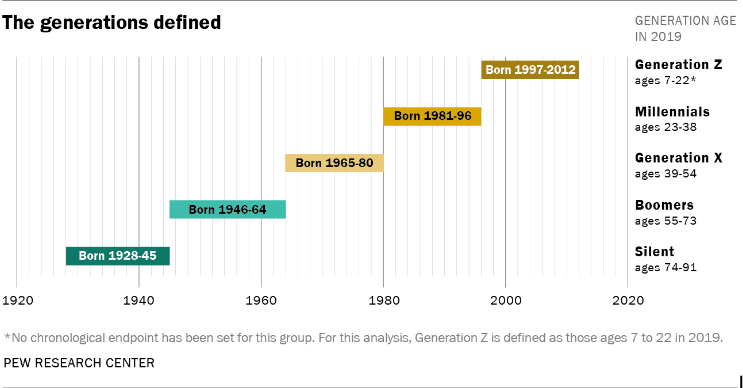3 steps to improve your intergenerational workflows
- Mahmoud Assy
- Dec 26, 2023
- 3 min read
In recent years we have been hearing more and more about generation Z, which is taking over more spaces in public life, but very few times it is mentioned how other generations interrelate in the workplace, how is the workflow between different generations in large or small organizations.
Karl Mannheim, author of The Problem of Generations, defined generation as "a group of individuals of similar ages whose members have lived through a noteworthy historical event in a given period of time".
But... which generations are cohabiting in the workplace?
Baby Boomers (1946-1964): the end of World War II and the demographic explosion in many countries gave rise to the name of this generation, born in times of peace and economic prosperity.
Generation X (1965 - 1980): the bridge between boomers and millennials.
Millennials or Generation Y (1981- 1996): also known as digital natives, generally associated with the rise of the Internet 1983.
Generation Z (1997-2010): they have no clear memory of 911 and are the youngest grouping in the labor market.
Please note that this is the most commonly used generational division. That division is heavily based on events that happened in the US and Europe.
The question is valid:
What can the 40-year-old manager of the organization have in common with the 22-year-old new hire?
Well, that is where the generational divide between employees begins. The gap lies where we don’t acknowledge, recognize, and use the richness of having a multigenerational workforce stemming from the diversity of knowledge and perspectives creating the perfect place for innovation and development.
Here are 3 steps to create better workflows between employees of different generations.
We need to start by identifying the implicit associations and stereotypes that we have of each generation and start challenging them in order to not exclude a certain generation from certain roles or functions based on assumptions.
We need to be open about our preferences in work interactions and communications. Do you expect your coworkers to respond to your email right away? What about a text message? Do people expect that from you? Thinking about these aspects and communicating them with your colleagues help avoid misunderstandings and conflicts.
Respect boundaries: With 4 different generations now present in the workplace we need to keep in mind that there will be a wide range of opinions about different topics.
As Emma Waldman put it in their HBR article titled How to Manage a Multigenerational Team:
“For example, when it comes to diversity and inclusion, there are important legal, moral, and strategic perspectives to consider. It’s not necessary for every person in the organization to agree or share the same priorities, but it is important for them to understand why the organization places a high value on the issues being discussed”.
Experts say that finding commonalities rather than accentuating differences, coupled with an atmosphere of respect and mutual admiration, can result in an enriching, innovative and productive intergenerational space where everyone learns from each other.
Do you want to improve the intergenerational workflow in your organization? At Eufonía Diversity we provide different training sessions and workshops that will help your team to be more effective.
Click here for more information https://www.eufoniadiversity.com/services-1
References
Mannheim, K (1958) Theory of generations. UCSB. Retrieved from: https://marcuse.faculty.history.ucsb.edu/classes/201/articles/27MannheimGenerations.pdf
Waldman, E. (2021, August 31) How to Manage a Multi-Generational Team. Retrieved from: https://hbr.org/2021/08/how-to-manage-a-multi-generational-team
Dimock, Michael (2019) The generations defined PEW Research. Retrieved from: https://www.pewresearch.org/fact-tank/2019/01/17/where-millennials-end-and-generation-z-begins/ft_19-01-17_generations_2019/
Fogel, B., Gerhardt, M., & Nachemson-Ekwall, J. (2021). Gentelligence: The Revolutionary. Approach to Leading an Intergenerational Workforce. Rowman & Littlefield Publishers, Incorporated.





Comments